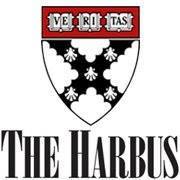
By Charanya Kannan, Harvard Business School, Class of '17 & Harbus Contributing Writer
"It is like looking for a needle in a haystack" describes Jim Searing with a mild chuckle, when asked to describe the executive search business. The founder and retired CEO of Lochlin Partners, a top notch executive search firm, has spent an impressive 32 years in the "head-hunting" industry. A Marine Corps veteran, he graduated from HBS in the summer of 1979, before setting out to hone his sales and marketing skills at behemoths like AT&T and Arthur Young. After learning the executive search consulting business at Arthur Young, he became driven by the desire to start-up on his own, anchored with his core skill and interest of personal sales. He struck out with a partner to found Kirkman & Searing, and grew it into a highly successful Mid-Atlantic search firm.
The executive search industry can be broadly classified into contingency search and retainer search. Contingency search is typically for entry or mid-level positions, where agencies get paid a commission upon recruitment. It typically involves quick and efficient matching through database searches. Retainer search, which is the space in which Searing has always specialized, is the more elite search space where firms are paid a retainer fee to find the perfect person for the upper echelons of the managerial tree. The search often involves several months of vetting scores of candidates, narrowing to a finalist slate of a handful, interviewing them many times, as well as, often, their family, friends and business colleagues.
After running his own firm for about ten years, his firm was acquired by the largest global retainer firm, Korn / Ferry Inc. As a senior partner, he headed their mid-Atlantic market and technology practice. After several years there, he was again driven by the entrepreneurial motive and moved to help found Foster Searing, Ltd. which was eventually renamed Lochlin Partners to ensure perpetuity beyond just the founding members.
Searing explained that some searches can be quite difficult; such as finding an outsider to run a family business for the first time. Yet, Searing recalls one of as his most difficult assignments as the search for a Chief Information Officer for the IRS. "The IRS has some of the most archaic technology systems that could be put in a museum, while also having some of the most advanced IT systems in the world. When tethered together, the end result is that it almost never works" he mirthfully remarks. "We had to find a CIO who could not only make sense of and improve upon all of this, but who was willing to move to the IRS salary level which was about one-tenth of what that level of expertise commanded in the IT industry".
How does one go about these searches? "Putting on the HBS market segmentation hat is the first step" he says. The search process begins by narrowing down the entire universe of applicable industries into specific, relevant sub-segments. A list of companies is then populated, from which evolves a list of potential executives. "But this linear and logical process must be complemented by a more random and parallel process of networking" he says. A search person's labyrinth of network becomes critical to obtaining informal pieces of information and other referred potential candidates. After all, recruiting firms seldom look for someone who is looking of job, in fact, they usually prefer someone who isn't necessarily looking for a situation.
Once the finalist potential three or four candidates have been identified and vetted, they are interviewed multiple times in multiple settings. Their references and spouses are interviewed too, and flags will be raised if only positive attributes are heard. It is equally important to understand their shortcomings while evaluating the overall fit. The whole process involves around 80 interviews from start to finish. "We brief and debrief not only the client firm's executives but also the candidate to make sure that each understands everything possible about the other" says Searing. Candidate selection is only one part of the process. A smooth onboarding process until they are well settled into their role is another part of the consulting. Helping them negotiate and find their way through the complicated maze of a new company and culture, having an open dialogue with them and the firm to ensure alignment and redressal of teething problems are all part of the retainer firm's work. There are no typical metrics in place to measure the success of a candidate search, but if the hire stays in the job for about 3-5 years, it is reasonable to assume that the search was a success. And whenever it doesn't work, it is seldom for lack of skills. It is almost always a case of cultural or expectation misfit.
Do recruiters look for candidates outside the client's industry? "It all depends on the client's requirements. At the CXO level, some clients do look for people with specific skills rather than industry expertise - but that is somewhat rare. When an industry is faced with a major shift, or when the company is looking to change its focus, candidates may be hired outside their traditional industry. IBM recruited Gerstner who didn't have a tech background because they wanted to focus more on marketing. Most client companies do have a strong preference for candidates within their industry. Even if the client is open to looking at outsiders, at the interview stage the connection is usually stronger with people from their own industry and most companies end up hiring them. As a recruiter, our role is to find what the client wants. We do advise them if we find an exceptional outsider, but this isn't the norm and is not our primary role. If someone is looking to change their current industry, my suggestion would be to use their functional expertise to pivot. Changing industries is easier earlier on one's career and, again, at the CXO level, but is more difficult in the 5- 20 years experience bracket."
How has he seen the industry transform throughout his long career? Searing says technology, especially Linkedin and Google searches, has drastically changed and shortened the candidate identification piece of the search cycle. "In the dark ages, candidate identification was about 60-70% of the work; it was pretty labor intensive" he laughs. Now, it's also easier to directly & confidentially connect with candidates. But it is harder to "administer the truth serum" in interviews as candidates have become much more interview savvy. Therefore, candidate evaluation and fit are now some of the most difficult and value-added parts of the search process.
What is Searing's advice to the batch of HBS graduating 37 years after he did? "I have three pieces of advice to give. First, if you know what your passion is - just go do it. No excuses there. If you do not know your passion, join a large firm. It provides you with more scope and leverage to experiment while looking solid and legitimate on your resume. And whatever you choose, do the job really well. It simply provides you with more opportunities".
"Second, network. Develop relationships not only with colleagues and bosses but also with juniors, vendors and clients. 80% of jobs are sourced through networking, and 90% of those are through networking with a person who is about three to five degrees-of-separation away. Figure out smart ways to keep in touch: it could be a simple act of emailing relevant articles once in a while. Create a list of 50 most important people you'd like to stay in touch with, refresh the list periodically, and make sure you actively reach out to them. Don't hesitate to ask people out for coffee".
"Third, save 'exit money'. If you find yourself caught in an ethical dilemma or a tough spot, having saved money can make your correct exit that much easier. And, if you followed my first and second pieces of advice, your exit shouldn't be tough either".
I promptly asked him out for coffee as the interview ended, when he visits Boston that is.
Did Searing find the right CIO for IRS? "Yes we did. We found an extremely qualified candidate who didn't mind the drastic pay cut as he was looking to give back to the society. We not just find the needle in the haystack, we find the perfect needle in the haystack - at least 80-90% of the time" he laughed.
__________________________
Charanya Kannan (HBS '17) is from Section I and enjoys writing about anything that she wishes to remember, grocery lists inclusive. She also loves talking to people about anything other than the weather, which is what she did in her first job as a TV anchor. She dreams of reading and writing more, if her two-year-old and a potential consulting career permit her. She is the Executive VP of on-campus engagements with the WSA Board


